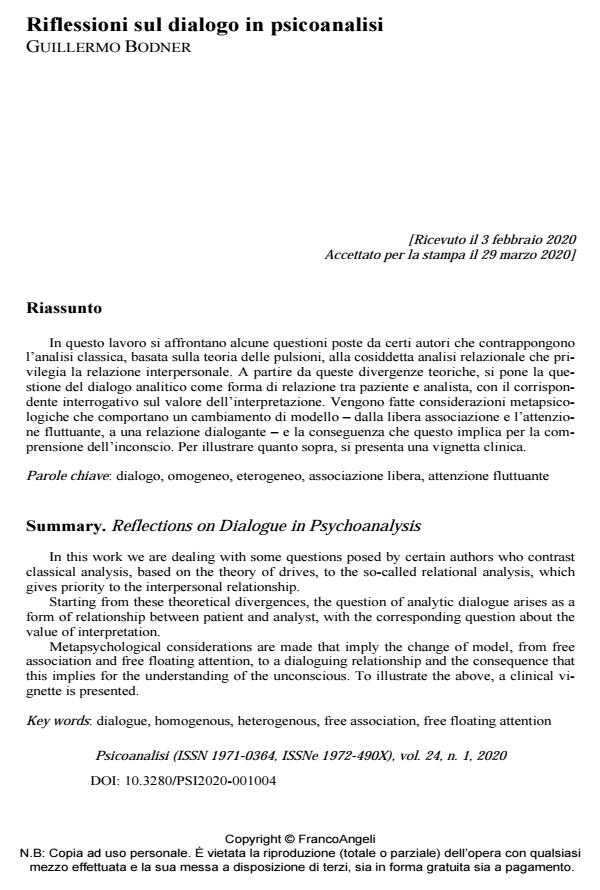Reflections on Dialogue in Psychoanalysis
Journal title PSICOANALISI
Author/s Guillermo Bodner
Publishing Year 2020 Issue 2020/1
Language Italian Pages 14 P. 49-62 File size 194 KB
DOI 10.3280/PSI2020-001004
DOI is like a bar code for intellectual property: to have more infomation
click here
Below, you can see the article first page
If you want to buy this article in PDF format, you can do it, following the instructions to buy download credits

FrancoAngeli is member of Publishers International Linking Association, Inc (PILA), a not-for-profit association which run the CrossRef service enabling links to and from online scholarly content.
In this work we are dealing with some questions posed by certain authors who contrast classical analysis, based on the theory of drives, to the so-called relational analysis, which gives priority to the interpersonal relationship. Starting from these theoretical divergences, the question of analytic dialogue arises as a form of relationship between patient and analyst, with the corresponding question about the value of interpretation. Metapsychological considerations are made that imply the change of model, from free as-sociation and free floating attention, to a dialoguing relationship and the consequence that this implies for the understanding of the unconscious. To illustrate the above, a clinical vignette is presented.
Keywords: Dialogue, homogenous, heterogenous, free association, free floating attention
Guillermo Bodner, Riflessioni sul dialogo in psicoanalisi in "PSICOANALISI" 1/2020, pp 49-62, DOI: 10.3280/PSI2020-001004